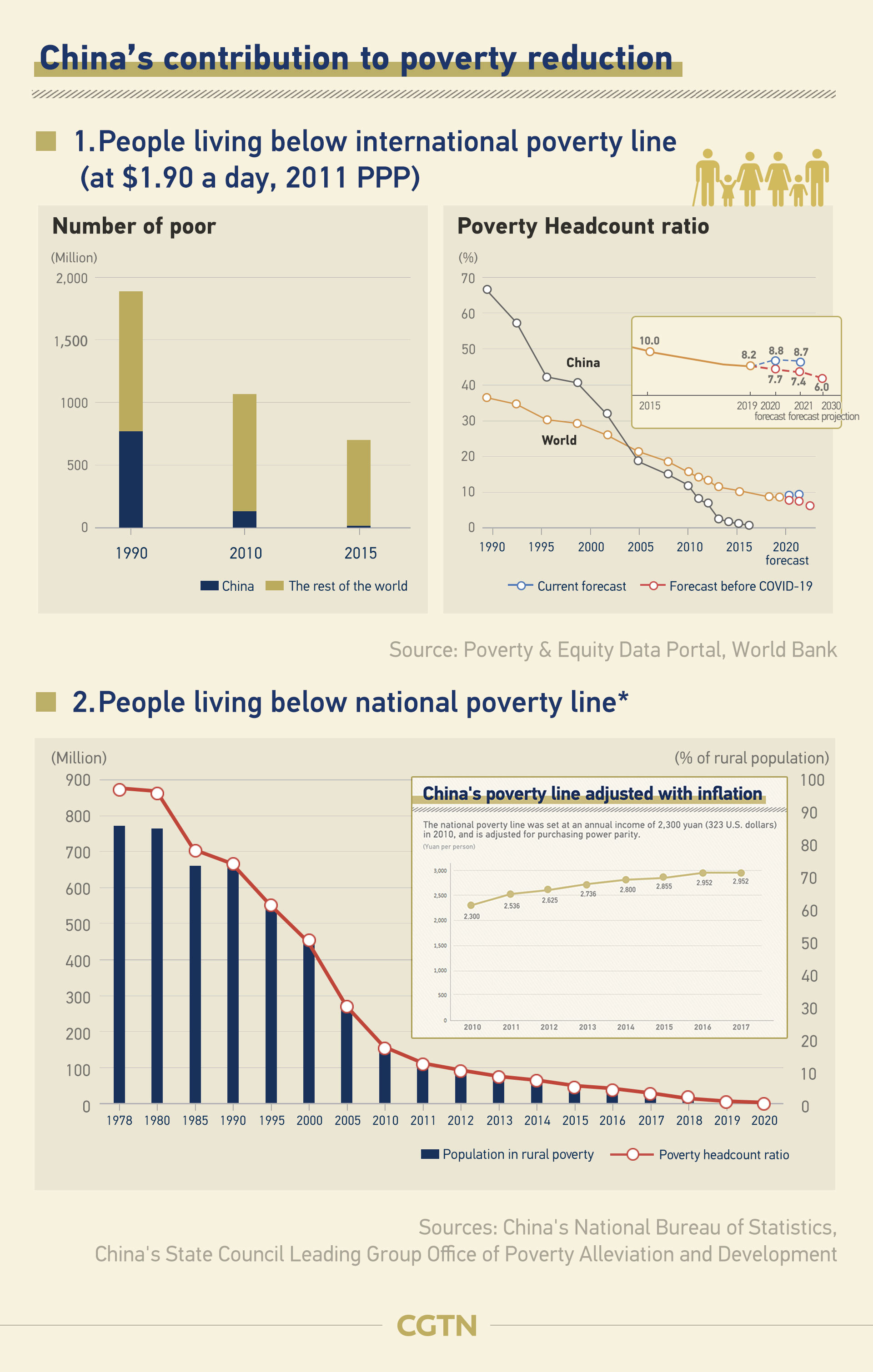A seminar held on Wednesday with the theme "The UN Sustainable Development Goals 2030 and China's Experience in Poverty Alleviation" stressed the importance of global cooperation and multilateralism in the poverty alleviation process, as the COVID-19 health crisis has greatly harmed worldwide efforts to reduce poverty and improve healthcare.
Read more about the seminar:
China shares experience in poverty alleviation as UN marks 75th anniversary
"No poverty" tops the 17 Sustainable Development Goals (SDGs) adopted by all United Nations member states in 2015.
Globally, the number of people living in extreme poverty declined from 36 percent in 1990 to 10 percent in 2015, based on 2011 purchasing power parity (PPP) of 1.9 U.S. dollars per person per day.

Of the more than one billion people who were lifted out of poverty worldwide from 1990 to 2015, 746 million were in China, accounting for 65 percent of the total number. This was a huge contribution to global poverty alleviation as well as the realization of the Millennium Development Goals (MDGs).
A report by the Food and Agriculture Organization of the United Nation said the key elements in China's strategies include recognizing and prioritizing ending extreme poverty at the highest levels of government, and implementing more dedicated and targeted policies which address the specific needs of the poorest and their challenges.
Read more:
China's success in poverty alleviation: Lessons for other countries
China is on course to eradicate extreme poverty nationwide by 2020, which will make it the first country in the world to end absolute poverty.
China is also on track to exceed its 2030 Paris Agreement Nationally Determined Contribution (NDC) due to its efforts to cut growth in energy use and reduce dependence on fossil fuels.

Despite a large population and huge resource demand, and energy resources mainly dependent on coal, China has shown missionary zeal and initiative in its efforts to address climate change and reduce greenhouse gas (GHG) emissions.
CO2 emissions per unit of GDP have dropped by nearly half compared with 2005, accomplishing in advance the targets set to reduce 40 to 45 percent from the 2005 levels by 2020. And the pledge for 2030 is to lower CO2 emissions per unit of GDP by 60 to 65 percent from the 2005 levels, with the CO2 emissions reaching a peak by 2030.
China has also vowed to raise the portion of its renewable and non-fossil fuel power consumption to 15 percent of the total energy mix by 2020 and 20 percent by 2030. The share of non-fossil fuels was 15.3 percent in 2019, surpassing the goal set for 2020.
China has always firmly supported and implemented the Paris Agreement. It called on all sides at the G20 Environment Ministers Meeting on Wednesday to resolutely defend multilateralism, fully and accurately understand and implement the Paris Agreement, and jointly respond to environmental and climate challenges.